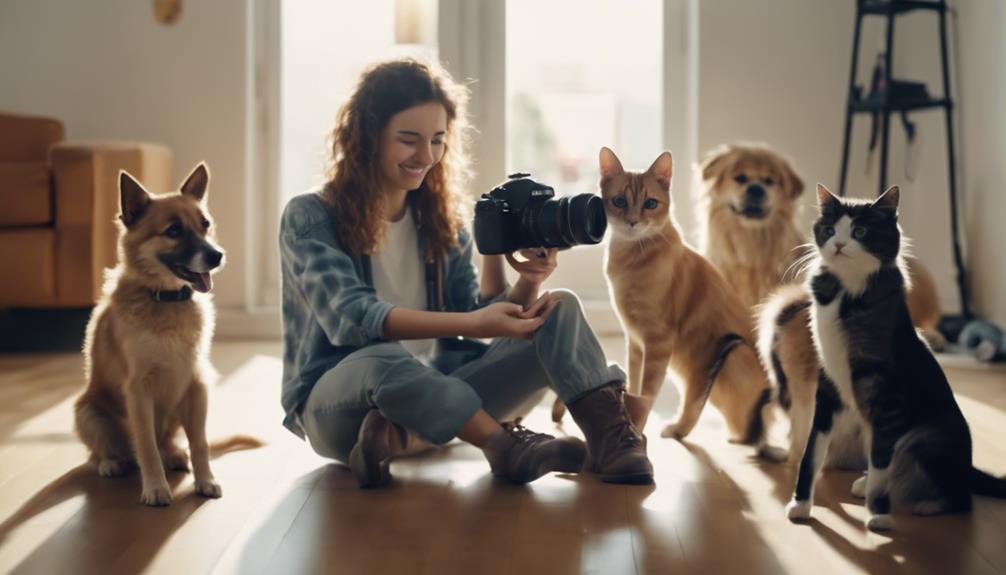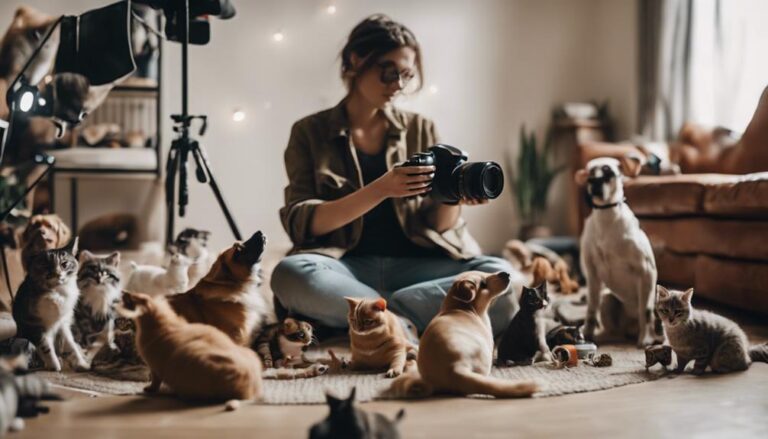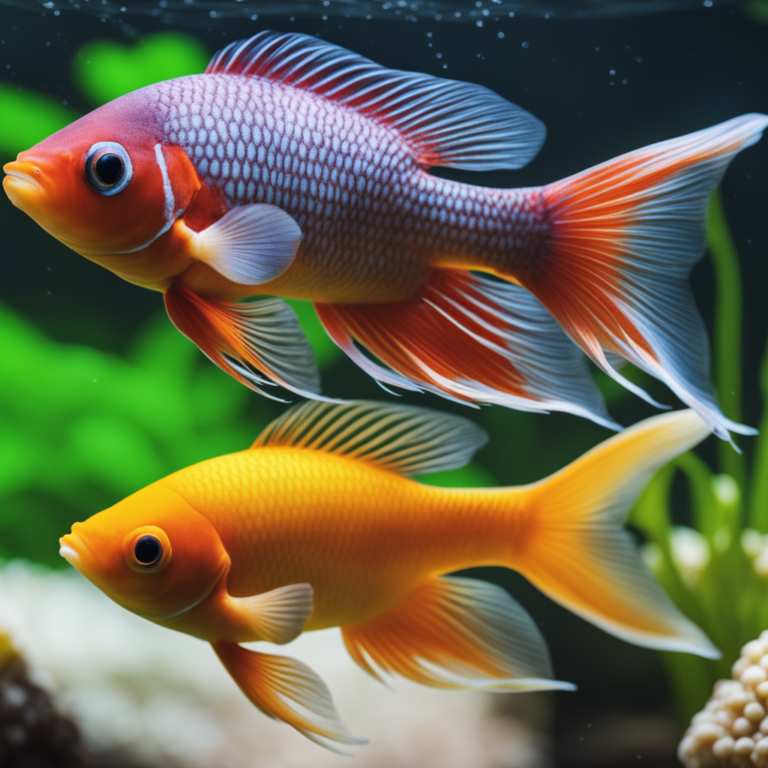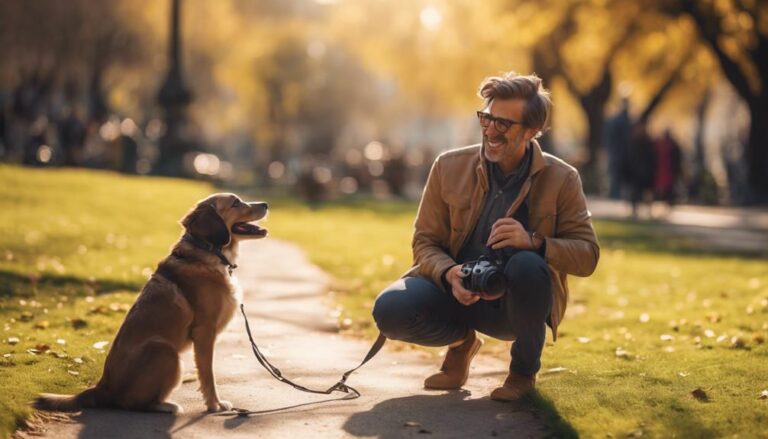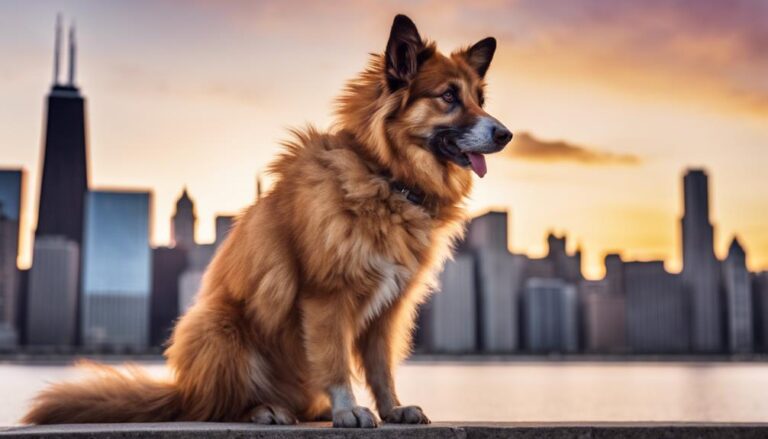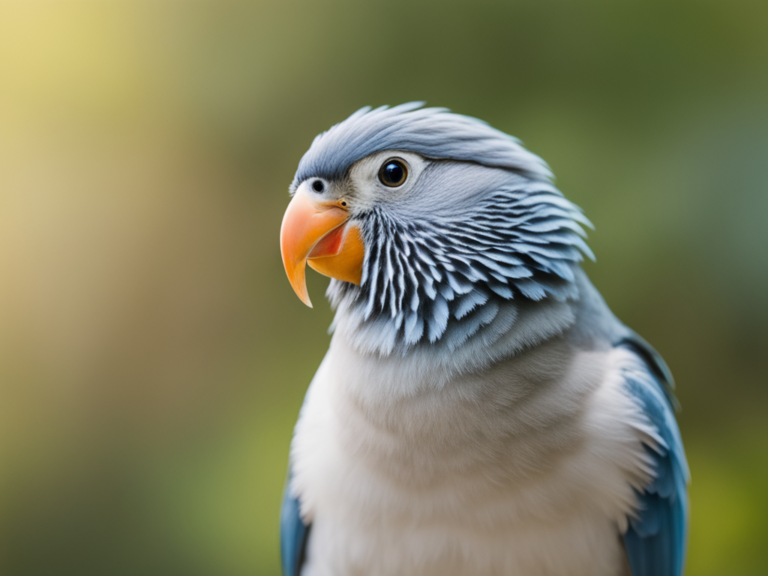Start your pet photography journey with specialized courses for beginners. Enhance your camera skills and confidence. Learn about gear and editing for high-quality images. Choose the right course that fits your needs. Master camera basics like exposure and focusing. Explore lighting techniques for impressive photos. Get creative with composition tips. Handle different pet personalities with ease. Immerse yourself in editing for vibrant pet portraits. Capture action shots and create memorable pet portraits. Build your portfolio and network with fellow photographers. Tackle challenging situations with skill. Develop further with specialized training. Find out more about excelling in pet photography.
Benefits of Pet Photography Courses
Enrolling in pet photography courses can greatly enhance your skills and confidence behind the camera. With the rise of pet photography trends on social media, capturing stunning images of pets has become more popular than ever. These courses not only teach you how to work with animals but also provide insights into the latest trends in pet photography, helping you create images that stand out on platforms like Instagram and Facebook.
When it comes to pet photography equipment, budget options are available for beginners. In pet photography courses, you'll learn about the essential gear needed to capture high-quality images of pets, even on a budget. Understanding the right equipment to use can make a significant difference in the outcome of your photos. From cameras to lenses to accessories like toys and treats, these courses cover everything you need to know to get started without breaking the bank.
Moreover, pet photography courses can introduce you to editing techniques that enhance your images. Learning how to edit photos effectively can take your pet photography to the next level, making your photos more visually appealing and professional. By enrolling in these courses, you'll not only improve your photography skills but also gain the confidence to pursue pet photography as a hobby or even a career.
Choosing the Right Course
When selecting a pet photography course, consider the format options available and the qualifications of the instructors. These factors can greatly impact your learning experience and the quality of education you receive. Take the time to research and choose a course that aligns with your goals and preferences.
Course Format Options
Explore various course format options to guarantee that you select the most appropriate pet photography course for your needs and preferences. When deciding on a course, consider whether you prefer the flexibility of online tutorials or the hands-on experience of in-person workshops. Online tutorials offer the convenience of learning from the comfort of your home, allowing you to pace yourself and revisit lessons as needed. On the other hand, in-person workshops provide the opportunity for immediate feedback and interaction with instructors and fellow learners. Think about your learning style and schedule to determine which format would best suit your requirements. Both options have their advantages, so choose the one that aligns with your goals and preferences.
Instructor Qualifications
Consider the qualifications of the instructors to guarantee you choose the right pet photography course that meets your learning objectives and expectations. When selecting a course, look for Instructor experience and Accreditation to ensure you are learning from knowledgeable professionals. Additionally, evaluate Teaching methods to see if they align with your preferred learning style. Curriculum clarity is essential, so ensure the course outline and objectives are clearly defined. To make an informed decision about the course and instructors, take the time to research and compare these aspects before enrolling. Remember, the right instructor can greatly impact your learning experience and overall success in pet photography.
- Instructor experience, Accreditation
- Teaching methods
- Curriculum clarity
- Research and comparison
Understanding Camera Basics
To capture stunning pet photos, mastering camera basics is essential. Understanding exposure settings and focusing techniques is vital for achieving sharp and well-exposed images of your furry friends. Exposure settings like aperture, shutter speed, and ISO determine how light or dark your photos will be. Learning how to adjust these settings based on the available light can greatly enhance the quality of your pet photography.
In addition to exposure settings, mastering focusing techniques is key to capturing clear and in-focus pet photos. Whether you choose manual focus for more control or autofocus for convenience, knowing how to focus properly on your pet's eyes can make a significant difference in the overall impact of your images.
Another essential aspect of camera basics is understanding white balance and depth of field. White balance ensures that the colors in your pet photos appear natural and true to life. Meanwhile, controlling the depth of field allows you to create beautiful bokeh backgrounds that make your pet stand out in the image.
Lighting Techniques for Pet Photography
Mastering proper lighting techniques is essential for enhancing your pet photography skills and capturing stunning images of your furry companions. When it comes to lighting for pet photography, there are key considerations to keep in mind:
- Natural vs artificial lighting: Natural light can create a soft and inviting ambiance, ideal for outdoor shots. Position your pet facing the light source to avoid harsh shadows. Artificial lighting, such as studio lights, offers more control over the intensity and direction of light, perfect for indoor shoots where natural light may be limited.
- Outdoor vs indoor settings: Outdoor settings provide dynamic lighting conditions that can add depth and interest to your pet photos. Take advantage of the golden hours—early morning or late afternoon—for a beautiful natural glow. In indoor settings, consider the color temperature of the light source to prevent color casts on your images. Experiment with different lighting angles to find the most flattering look for your pet.
Whether you opt for natural or artificial lighting, and outdoor or indoor settings, understanding how light interacts with your furry subject is crucial for creating compelling pet photographs. Practice using different lighting techniques to enhance your images and bring out the unique personality of your pet.
Composition Tips for Beginners
Understanding the basics of composition is key for beginners looking to enhance their pet photography skills and create visually appealing images of their furry friends. To improve your pet photography composition, consider using the rule of thirds. Imagine your photo divided into nine equal parts by two vertical and two horizontal lines. Place your pet along these lines or at the points where they intersect to create a more balanced and visually interesting shot.
Lighting is essential in pet photography composition. Natural light can enhance your pet's features and create a warm, inviting atmosphere in your photos. Pay attention to how light falls on your pet and experiment with different angles to find the most flattering illumination.
Another composition technique to explore is using leading lines. These are lines within the photo that draw the viewer's eye towards the main subject – your pet. Paths, fences, or even a stretch of grass can act as leading lines, guiding the viewer's gaze to your furry friend.
Framing is also vital in pet photography. Look for natural frames like doorways, windows, or tree branches to enclose your pet within the shot. This technique can add depth and context to your images, making them more engaging and visually appealing. Experiment with these composition tips to elevate your pet photography skills and capture stunning images of your beloved companions.
Working With Different Pet Personalities
Enhancing your pet photography skills involves adapting to the different personalities of the pets you are working with. Understanding pet behavior dynamics and handling pet temperament are key aspects to take into account when capturing the perfect shot.
- Observing Pet Behavior Dynamics:
- Each pet has its unique behavior traits that can influence the photoshoot.
- Pay attention to how each pet reacts to its surroundings and the camera.
- Handling Pet Temperament:
- Some pets may be shy and require a gentle approach to gain their trust.
- Others may be energetic and need more interactive engagement to capture their attention.
When working with different pet personalities, it's crucial to be patient and flexible. For shy pets, allow them time to warm up to you and the camera. Use calming techniques such as soft voices and slow movements to create a comfortable environment. On the other hand, for energetic pets, be prepared to move around and use toys or treats to keep them engaged. By adapting to the pet's temperament and behavior dynamics, you can create stunning photographs that capture their true essence.
Editing Your Pet Photos
When editing your pet photos, focus on enhancing the colors and sharpness to bring out the best in your furry subjects. Utilize color correction techniques to adjust the tones and hues in your images, making your pet's fur coat appear more vibrant and true to life. Image retouching can also help remove any distractions or imperfections, ensuring the focus remains on your adorable pet.
To achieve these edits, consider using pet photo editing software that offers a range of tools specifically designed for enhancing animal photos. These programs often include features like automatic pet eye enhancement, fur enhancement, and background replacement options. Experiment with different digital enhancements to see what works best for each photo.
When editing, pay attention to details like the brightness and contrast levels. Adjusting these settings can make your pet's features stand out more prominently. Additionally, sharpening the image can help define the fur texture and create a more polished look.
Remember not to over-edit your pet photos; aim for a natural and realistic result. The goal is to enhance the image, not completely alter your pet's appearance. By mastering these editing techniques, you can elevate your pet photography and create stunning images that capture the essence of your beloved furry friends.
Capturing Action Shots
To capture dynamic action shots of your pets in motion, focus on adjusting your camera settings to freeze the movement and convey the energy and excitement of the moment. When capturing pet action, candid moments, it is crucial to use techniques that will help you achieve sharp, focused images that showcase the liveliness of your furry friends. Here are some tips to help you master the art of pet photography in motion:
- Use a Fast Shutter Speed: Set your camera to a fast shutter speed to freeze the action and avoid motion blur. A shutter speed of 1/500 or faster is typically recommended for capturing pets in movement.
- Focus on Continuous Autofocus: Enable the continuous autofocus mode on your camera to keep your pet in focus as they move around. This feature is especially useful for capturing fast-paced action shots.
- Consider Burst Mode: Utilize the burst mode function to take multiple shots in rapid succession. This can help you capture those split-second moments of excitement and playfulness.
- Experiment with Angles and Perspectives: Get down to your pet's eye level or try shooting from different angles to add variety and interest to your action shots. Do not hesitate to get on the ground or climb higher to capture unique perspectives of your pet's movements.
Creating Memorable Portraits
Capture the unique personality and essence of your pet through engaging portrait photography. When creating memorable portraits of your furry friend, explore different pet photography styles and creative concepts to showcase their individuality. Experiment with various angles, lighting techniques, and backgrounds to capture the true spirit of your pet. Whether you prefer a classic, elegant look or a more whimsical and playful vibe, tailor your approach to reflect your pet's character.
Incorporating pet photography props and accessories can add depth and interest to your portraits. Consider using items that are meaningful to your pet or that highlight their favorite activities. From colorful scarves and hats to toys and treats, props can enhance the visual storytelling in your photographs. Just remember not to overwhelm the image – the focus should always be on your pet.
To create a lasting impression with your pet portraits, focus on capturing authentic moments and emotions. Encourage natural interactions and expressions from your pet by engaging with them during the photoshoot. Whether it's a joyful smile, a curious gaze, or a playful pose, these candid moments can result in truly memorable photographs. Remember, the goal is to celebrate the unique bond between you and your pet through creative and heartfelt portraits.
Building Your Pet Photography Portfolio
When building your pet photography portfolio, focus on capturing pet personalities and showcasing pet interactions. These elements will help potential clients connect with your work on a deeper level and see the unique characteristics of each animal. By highlighting these aspects, you can create a portfolio that stands out and attracts more opportunities in the pet photography industry.
Capturing Pet Personalities
Showcasing the unique personalities of pets through photography can greatly enhance your pet photography portfolio. When capturing pet personalities, consider the following tips:
- Observe Pet Behavior: Pay attention to how pets interact with their environment to capture authentic moments.
- Highlight Personality Traits: Focus on capturing expressions and actions that reflect the individuality of each pet.
- Experiment with Lighting Techniques: Play with natural light or artificial lighting to create different moods in your photos.
- Utilize Photo Editing: Enhance your images by adjusting colors, contrast, and sharpness to bring out the best in each pet's personality.
Showcasing Pet Interactions
To enrich your pet photography portfolio, focus on capturing the dynamic interactions between pets and their surroundings. Showcasing pet playtime and emotions in your photos can bring a sense of liveliness and authenticity to your portfolio. Capture the joy and excitement of pets playing with their favorite toys or frolicking in the park. Freeze those moments of affection and connection between pets and their human companions. Whether it's a dog wagging its tail enthusiastically or a cat expressing curiosity towards a new object, these interactions can add depth and storytelling to your pet photography. Experiment with different angles and perspectives to showcase the unique bond between pets and their environment, creating a vibrant and engaging portfolio that truly captures the essence of pet companionship.
Marketing Your Pet Photography Business
Promoting your pet photography business effectively can greatly boost your client base and revenue. To enhance your marketing efforts, consider the following strategies:
- Utilize Social Media: Engage with pet owners on platforms like Instagram, Facebook, and Pinterest. Share your work regularly, interact with followers, and use targeted ads to reach potential clients.
- Focus on Branding: Develop a unique brand identity that resonates with pet owners. Create a memorable logo, use consistent visual elements, and showcase your love for animals in all your communications.
- Implement Pricing Strategies: Offer transparent pricing packages that cater to different budgets. Clearly outline what each package includes to help clients make informed decisions.
- Enhance Client Communication: Build strong relationships with your clients by providing excellent customer service. Respond promptly to inquiries, listen to their needs, and follow up after photoshoots to guarantee satisfaction.
Networking With Other Pet Photographers
Connect with fellow pet photographers to expand your professional network and grow your skills in the industry. Joining the pet photography community and attending events can provide valuable opportunities to meet like-minded individuals, share experiences, and learn from others in the field. These events often include workshops, seminars, and photography outings where you can connect with peers who share your passion for capturing stunning images of animals.
Collaborating with peers is another excellent way to enhance your pet photography skills. By working together on projects, sharing tips and tricks, and offering feedback on each other's work, you can gain new insights and perspectives that will help you improve as a photographer. Collaborations can also lead to new business opportunities as you expand your portfolio and reach a wider audience through joint projects.
Attending conferences, expos, and local meetups focused on pet photography can further expand your network and provide inspiration for your work. These gatherings are not only a great way to connect with other photographers but also to stay updated on the latest trends and techniques in the industry. By actively participating in the pet photography community and engaging with your peers, you can foster meaningful relationships that will support your growth as a photographer.
Handling Challenging Pet Photography Situations
Getting through challenging pet photography situations requires patience, flexibility, and a keen eye for capturing the unexpected moments. When facing pet behavior and challenging environments, it's vital to adapt quickly to make sure you capture the perfect shot. Here are some tips to help you handle such situations effectively:
- Understanding Pet Behavior: Familiarize yourself with common pet behaviors to anticipate their movements and expressions. This knowledge will enable you to be prepared to capture authentic moments.
- Handling Unpredictable Pets: Some pets may be anxious, hyperactive, or uncooperative during a photoshoot. Stay calm, use positive reinforcement techniques, and be patient to guide them into poses or actions that work for the photos.
- Dealing with Challenging Environments: Whether it's a busy park or a dimly lit room, challenging environments can impact the quality of your photos. Experiment with different angles, settings, and props to make the most out of the situation.
- Overcoming Lighting Difficulties: Lighting plays a significant role in pet photography. Natural light is often the best option, but when it's lacking, consider using artificial lighting sources or reflectors to enhance the photos.
Continuing Education in Pet Photography
As you progress in your pet photography journey, exploring skill development techniques and specialized pet portraiture can greatly enhance your abilities. These aspects of continuing education can help you refine your craft and stand out in a competitive market. Consider incorporating these points into your learning to elevate your pet photography skills to the next level.
Skill Development Techniques
Enhance your pet photography skills through specialized courses designed for continuing education in the field. To improve your photography, consider the following techniques:
- Experiment with lighting: Learn how to use natural light to your advantage and explore artificial lighting setups for different effects.
- Master composition: Discover how to frame your shots effectively, use leading lines, and create visually appealing pet portraits.
- Explore angles: Experiment with different angles to capture unique and engaging shots of pets.
- Practice patience: Develop the skill of waiting for the perfect moment to capture the essence of your furry subjects.
Specialized Pet Portraiture
Improve your pet photography skills through specialized courses focusing on Specialized Pet Portraiture, a niche area within continuing education in pet photography. These courses explore advanced pet posing techniques to capture the perfect shot and enhance your creative pet photography skills. You'll learn about the essential pet photography equipment needed to excel in this specialized field, from high-quality lenses to lighting setups. Additionally, mastering pet photo editing techniques will elevate your portraits to a professional level, ensuring your furry subjects look their best in every shot. By honing your skills in Specialized Pet Portraiture, you'll be able to create stunning and memorable images that truly capture the essence of your beloved pets.
Frequently Asked Questions
Can I Bring My Own Pet to a Pet Photography Course, or Will Animals Be Provided for Practice?
Yes, you can bring your own pet to a pet photography course for practice. Check the enrollment qualifications to make sure your pet meets requirements. It's a great way to learn and bond with your furry friend.
Are There Any Specific Requirements or Qualifications Needed to Enroll in a Pet Photography Course?
To enroll in a pet photography course, you don't need any prerequisites or qualifications. These courses are designed for beginners, providing a pet-friendly environment where you can practice with your camera equipment and learn the ropes.
Will I Need to Invest in Expensive Camera Equipment and Accessories for the Course, or Can I Use a Basic Camera?
You don't need to break the bank for a pet photography course. With a basic camera and affordable accessories, you can capture amazing shots. The focus is on learning techniques and skills, not expensive gear.
Are There Opportunities for Hands-On Practice or Real-Life Pet Photography Sessions Included in the Course Curriculum?
Yes, real-life practice and hands-on sessions are essential for mastering pet photography. These experiences will help you hone your skills, gain confidence, and understand how to capture the perfect moments with your furry subjects.
How Long Does It Typically Take to Complete a Pet Photography Course, and Are There Flexible Scheduling Options Available for Busy Individuals?
Typically, completing a pet photography course takes around 4-6 weeks, with flexible scheduling options to accommodate busy individuals. The time commitment varies based on your pace, but you can expect to finish within that timeframe.
Conclusion
Now that you've completed a pet photography course for beginners, you have the skills and knowledge to capture amazing photos of furry friends. Remember to practice what you've learned, network with other pet photographers, and continue your education in this exciting field. With dedication and passion, you can turn your love for pets and photography into a successful business. Keep snapping those adorable shots!

